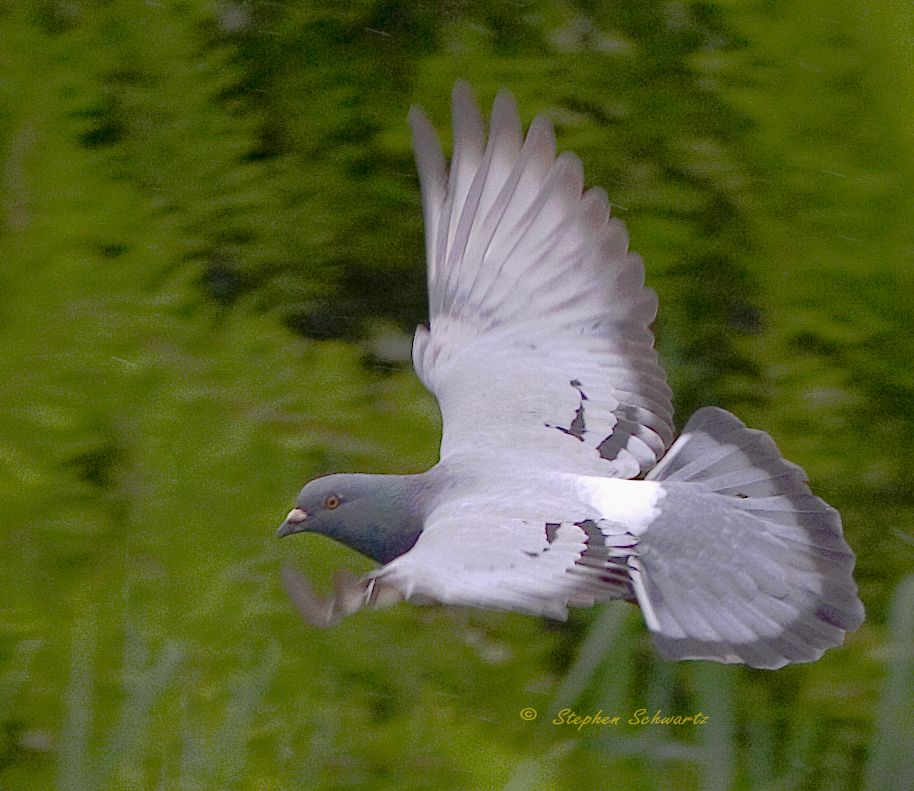
Columba livia
By Frank Mosca
The Rock Pigeon & Feral Pigeon in Flight (Pg. 3)

A beautiful shot of a wild-type (blue bar) Canadian feral pigeon by Stephen Schwartz and used by permission. Note the white rump, which MAY be an anti-predator defense against peregrine falcon attackA. Note the tail bar - while we tend to say it is "terminal" it is really sub-terminal with about a millimeter or so edge of blue. This is also a great shot to see that the wing bars are actually composed of a spot of black on each feather. The right wing shows only nine primary flight, which means that it's dropped one in molt already. (This photo is simply too good to crop so it may be off your monitor a bit, but it's worth it to see a picture of a pigeon like this.)
Nature 434, 973-974 (21 April 2005) | doi: 10.1038/434973b
Predation: Prey plumage adaptation against falcon attack
Alberto Palleroni1,3, Cory T. Miller2, Marc Hauser1 and Peter Marler3
Several plumage types are found in feral pigeons (Columba livia), but one type imparts a clear survival advantage during attacks by the swiftest of all predators — the peregrine falcon (Falco peregrinus)1, 2. Here we use quantitative field observations and experiments to demonstrate both the selective nature of the falcon's choice of prey and the effect of plumage coloration on the survival of feral pigeons. This plumage colour is an independently heritable trait3 that is likely to be an antipredator adaptation against high-speed attacks in open air space.
- Primate Cognitive Neuroscience Laboratory, Department of Psychology, Harvard University, Cambridge, Massachusetts 02138, USA
- Laboratory of Auditory Neurophysiology, Department of Biomedical Engineering, Johns Hopkins University School of Medicine, Baltimore, Maryland 21205, USA
- Laboratory of Animal Communication, University of California, Davis, California 95616, USA
A Nature, http://www.nature.com/nature
Thanks to Bill Schmoker, I'm able to show you some other great shots of pigeons in flight. Notice, especially, the ash-red. You can easily see the duality of the mutation in the flights (the ash on the outer edges and more red toward the interior) that led W.F. Hollander to name it: ash-red. You can also see the ash tail with no dark bar showing.
Ash-red feral in flight - photo copyright by Bill Schmoker. Photo is linked to his site.
Feral pied. Note the dark eyes, which appear to be bull-eyed, most likely because of the white feathers near the eyes. Also note the alula (thumb) on the right wing slotted open. Photo copyright by Bill Schmoker.
Photo also linked to his site.